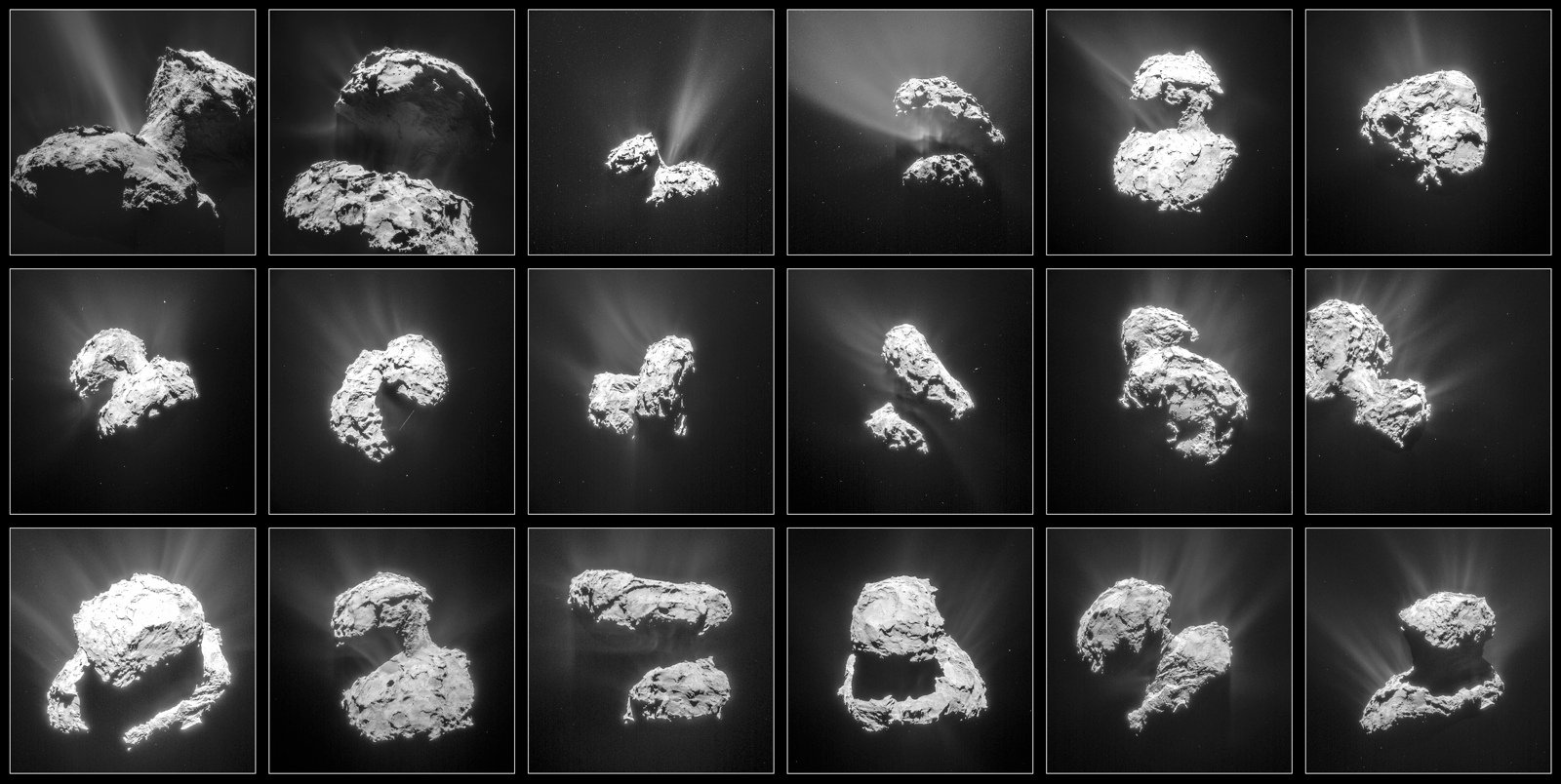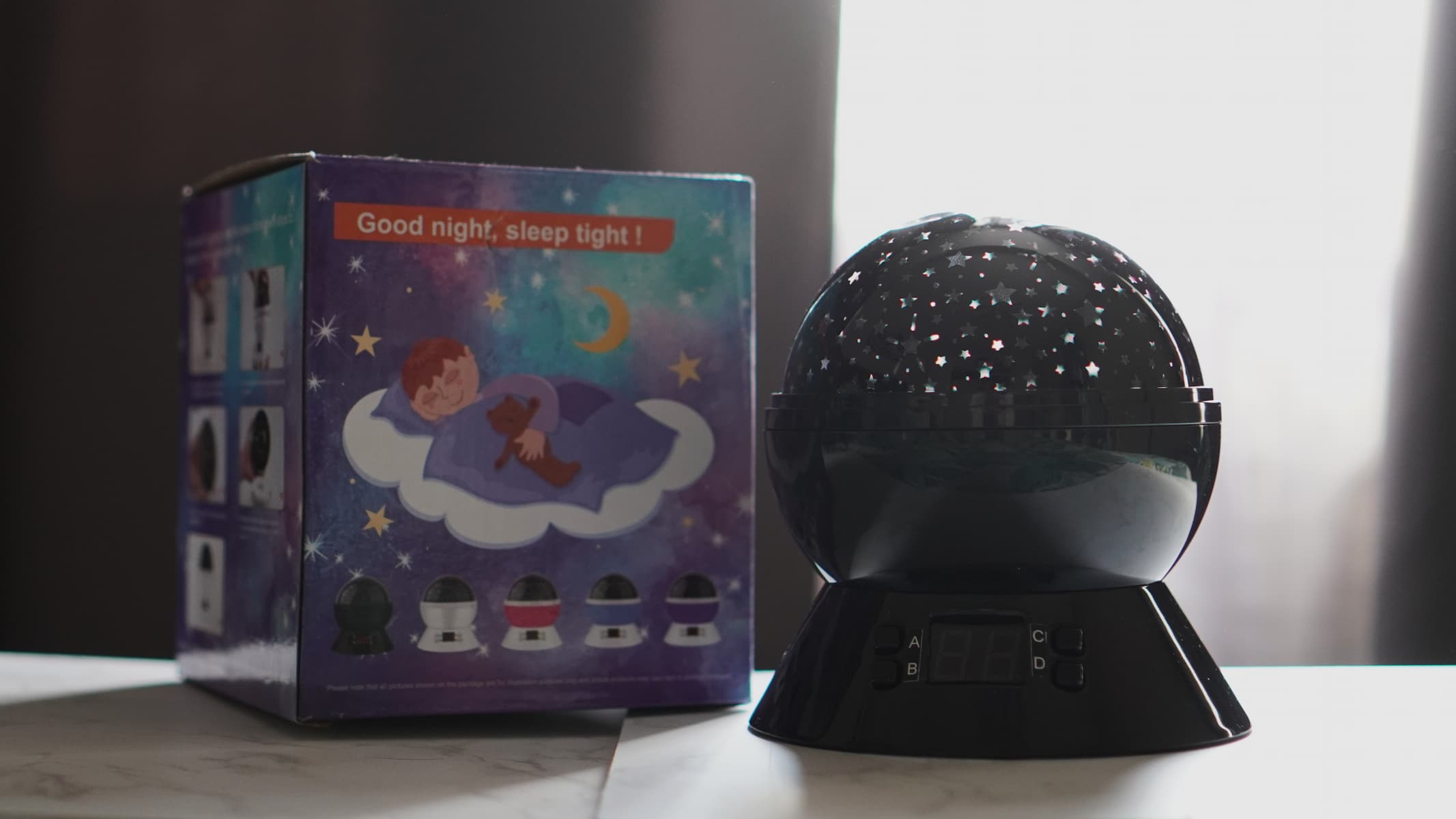Comet Comes to Life in Amazing Rosetta Spacecraft Photo Montage

The heat is on for the Comet 67P/ Churyumov-Gerasimenko as it sails ever closer to the sun, with the European Rosetta spacecraft snapping a stunning set of photos that the buzzing activity of the icy wanderer.
A new montage of comet photos by Rosetta shows gas and dust erupting from Comet 67P as the icy object continues its approach to perihelion, its closest approach to the sun, later this year in August. Already the sun's warmth is making frozen ices evaporate into gas, which carry dust out with it. This creates an envelope of gas surrounding the comet, called a coma.
The Rosetta image series, which the European Space Agency unveiled Monday (April 13), shows the comet's activity between Jan. 31 (top left) and March 25 (bottom right). At the time, Comet 67P was between 226 million and 186 million miles (363 million and 300 million kilometers) from the sun. [Video: Watch Rosetta's Super-Close Comet Encounter]
"As the comet continues to move closer to the sun, the warming continues and activity rises, and pressure from the solar wind causes some of the materials to stream out into long tails, one made of gas, the other of dust," the ESA officials wrote in an image description.
In August, Comet 67P will make its closest approach to the sun as it passes between the orbits of Earth and Mars. At that time, the comet will be about 115 million miles (185 million km) from the sun.
"The comet's coma will eventually span tens of thousands of kilometers, while the tails may extend hundreds of thousands of kilometers, and both will be visible through large telescopes on Earth."
The Rosetta spacecraft has been watching over the comet since arriving in August 2014, keeping an eye out now from a few tens of kilometers above the surface. In past months, it got as close as six kilometers (3.7 miles). It's the first time a spacecraft has spent an extended amount of time with a comet.
Breaking space news, the latest updates on rocket launches, skywatching events and more!
In November, Rosetta released a lander called Philae that successfully touched down on the surface, but far off target in a shady spot. Philae fell silent when its solar-powered batteries drained a few dozen hours after landing. Rosetta has tried listening for Philae a few times in recent weeks, but with no success.
Follow Elizabeth Howell @howellspace, or Space.com @Spacedotcom. We're also on Facebook and Google+. Originally published on Space.com.
Join our Space Forums to keep talking space on the latest missions, night sky and more! And if you have a news tip, correction or comment, let us know at: community@space.com.

Elizabeth Howell (she/her), Ph.D., was a staff writer in the spaceflight channel between 2022 and 2024 specializing in Canadian space news. She was contributing writer for Space.com for 10 years from 2012 to 2024. Elizabeth's reporting includes multiple exclusives with the White House, leading world coverage about a lost-and-found space tomato on the International Space Station, witnessing five human spaceflight launches on two continents, flying parabolic, working inside a spacesuit, and participating in a simulated Mars mission. Her latest book, "Why Am I Taller?" (ECW Press, 2022) is co-written with astronaut Dave Williams.
